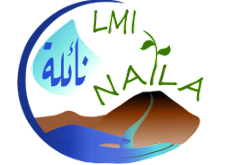The LMI is based on two study sites: the Lebna watershed in Cap Bon and the Merguellil watershed in the Kairouan region. These two model environments have been studied for more than two decades within the framework of the historical collaboration between the Tunisian partners and the IRD. They are articulated with the network for monitoring the hilly lakes of the Tunisian Dorsal managed by the General Directorate for the Development and Conservation of Agricultural Land (DG-ACTA) of the Tunisian Ministry of Agriculture. For both sites, there are descriptions of the hydrological regimes and the use of resources, the improvement of which is one of the scientific challenges of the LMI. Water management involves many actors (e.g. farmers, user associations, administrations, public, private). By the stakes and the processes that they concentrate, these two sites require interdisciplinary approaches, for which the tools remain to be developed.
Like many Mediterranean regions, these two environments have experienced several strategies for mobilizing water resources for half a century. They can be schematized by :
In addition, these two study sites present contrasting situations that differ in terms of
As a result, the articulation of activities on these two sites should make it possible to increase the relevance of the analyses and the generosity of the methodological developments, in a perspective of representativeness of the Mediterranean territories. As such, they are compared to other rural Mediterranean environments that the LMI partners are studying (e.g. the Hérault and Crau watershed in France, Tensift in Morocco), thus promoting North-South and South-South exchanges.
